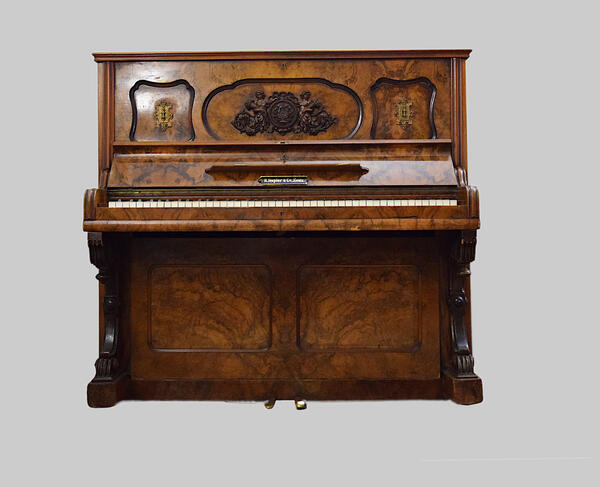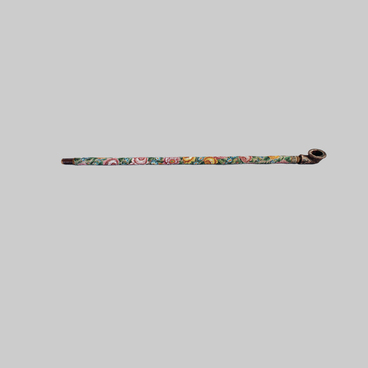During the years of the Decembrists’ stay in the city of Yalutorovsk, Matvey Ivanovich lived with his wife Maria Konstantinovna and pupils Avgusta Sozonovich and Anna Borodinskaya in the house of the Muravyov-Apostols, guests often gathered, namely, the Decembrists, their relatives and friends. Mikhail Znamensky, who was the son of the priest Stephen Znamensky, recalled:
German piano
Creation period
late 19th century
Place of сreation
Zeitz, Germany
Dimensions
130х142х61 cm
Technique
factory made
Collection
Exhibition
2
Open in app#3
R. Hupfer & Co. Zeitz
German piano
#2
#4
The whole house had only 4 rooms and a hallway. At the entrance, there was a door to the left leading to the office and straight ahead leading to the hall. <…> The living room, where the piano stood…
Mikhail Znamensky
#5
In the house, built in 1795 “on the third street from the Tobol River in the parish of the Church of the Ascension of the Lord”, music was often played, as it was customary to arrange musical evenings. The owner, Matvey Muravyov-Apostol, personally loved music, and his youngest pupil Annushka was very musically gifted. She often played the piano, probably the only one in town.
At that time, pianos were called pianos (plural), and sometimes the term “clavier” was also used in reference to the musical instrument. The rectangular instrument was called a “table piano”, while the winged one was called a “three-legged piano.” The first workshops for the manufacture of pianos in the Russian Empire were the enterprises of German masters working in St. Petersburg. By the mid 19th century, the piano received widespread acceptance as a close kin to the grand piano. The late 19th century piano is part of the museum collection of the Yalutorovsk Museum Complex. The German company R. Hupfer & Co Zeitz piano was purchased in 1992 from Tyumen resident, Inessa Opyatyuk. It was bought by representatives of the Stroitel joint-stock company of the city of Yalutorovsk and presented to the Yalutorovsk Museum of Local History in Memory of the Decembrists. Today, this ancient musical instrument adorns the living room of the memorial house of M.I. Muravyov-Apostol, which also contains several pieces of furniture with history. According to legend, they belonged to the nobleman and the Decembrist himself, hero of the Patriotic War of 1812 and foreign campaigns of 1813-1814, Matvey Ivanovich Muravyov-Apostol.
At that time, pianos were called pianos (plural), and sometimes the term “clavier” was also used in reference to the musical instrument. The rectangular instrument was called a “table piano”, while the winged one was called a “three-legged piano.” The first workshops for the manufacture of pianos in the Russian Empire were the enterprises of German masters working in St. Petersburg. By the mid 19th century, the piano received widespread acceptance as a close kin to the grand piano. The late 19th century piano is part of the museum collection of the Yalutorovsk Museum Complex. The German company R. Hupfer & Co Zeitz piano was purchased in 1992 from Tyumen resident, Inessa Opyatyuk. It was bought by representatives of the Stroitel joint-stock company of the city of Yalutorovsk and presented to the Yalutorovsk Museum of Local History in Memory of the Decembrists. Today, this ancient musical instrument adorns the living room of the memorial house of M.I. Muravyov-Apostol, which also contains several pieces of furniture with history. According to legend, they belonged to the nobleman and the Decembrist himself, hero of the Patriotic War of 1812 and foreign campaigns of 1813-1814, Matvey Ivanovich Muravyov-Apostol.
#6
Tyumen Museum and Educational Association
read morehide
00:00
00:00
1x
German piano
Creation period
late 19th century
Place of сreation
Zeitz, Germany
Dimensions
130х142х61 cm
Technique
factory made
Collection
Exhibition
2
Open in app
Share



